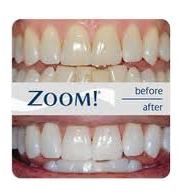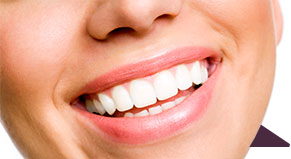June 30th, 2016
 You might consider brushing and flossing your teeth everyday a pain. But it’s definitely not as painful as it used to be. Throughout history, humans have experimented with a variety of different tools and ingredients to clean their teeth, including bones and oyster shells. The toothbrushes, toothpastes and floss we use today were created relatively recently.
You might consider brushing and flossing your teeth everyday a pain. But it’s definitely not as painful as it used to be. Throughout history, humans have experimented with a variety of different tools and ingredients to clean their teeth, including bones and oyster shells. The toothbrushes, toothpastes and floss we use today were created relatively recently.
Let’s take a step back a few thousand years and take a look at how our ancestors used to try to keep their teeth in decent shape.
Ancient Toothbrushes
Some of the first evidence experts have found of toothbrushes dates back to 3,500 to 3,000 BC. Before that, people tended to use cloth and water to wash their teeth. They added abrasives like chalk and salt to keep their teeth polished.
Babylonians and Egyptians are thought to be two of the first groups of people to use a toothbrush-like tool. Archeologists have found twigs split and frayed at the end to create a sort of brush in the tombs of Egyptians. We can thank the Chinese for the invention of natural bristles in the 15th century. People in China created bristles from pig necks and attached them to bones or bamboo, which they used as handles to hold.
This Chinese toothbrush design caught on in Europe, as Europeans created their own version of toothbrushes with gentler horsehair bristles. Toothbrush design continued to improve, with William Addis creating a toothbrush handle from cattle bone and a brush with swine bristles in England around 1780. Bristles made with animal parts were finally replaced with nylon bristles in 1938.
Toothpastes and Powders Back in the Day
Toothpastes were used to keep our ancestor’s teeth and gums clean well before toothbrushes were created. Ancient Egyptians used ox hoof powder, burnt eggshells and ashes to keep their mouths clean and breath fresh. Greeks and Romans chose clean their teeth with rougher ingredients, like oyster shells and ground bones.
The Chinese tended to use ginseng, salt and herbal mint to keep their pearly whites clean. (We’ll take ancient Chinese toothpaste over Greek toothpaste any day.) These older toothpastes were actually more like powders. The more modern paste was created in the 1850s in England. Soap, chalk, betel nut, and crushed charcoal were among many ingredients used to create teeth-cleaning paste in England.
Flossing History
If you think flossing is hard today, try doing it with a pointed stick. (Actually, don’t. You could seriously injure yourself.) A few thousand years ago, our ancestors used to try to stick pointed sticks, horsehair, and twigs between their teeth to get food particles and other gunk out.
An American dentist named Dr. Levi Spear Parmly decided to improve on these ancient techniques with the introduction of waxed silk thread as floss. He also suggested that people floss every day. Unwaxed silk floss was created in 1882 and nylon replaced silk in dental floss in the 1940s.
Next time you don’t want to clean your teeth, just think about what the Greeks and Romans had to go through! Thankfully, we’ve come a long way. Nowadays, we have documented the proper brushing technique for healthy teeth and the best tools to get the job done. If you have any questions on your teeth- and gum-cleaning techniques, don’t hesitate to contact us!
July 10th, 2013
 For every great, reliable method for tooth care, there are dozens of imitators and "fast-acting" methods that try to cash in on new trends. The process of teeth whitening is one of the biggest victims of this pattern. While at-home whitening techniques can work, it's hard to sift through the many different products to find the ones guaranteed to do a good job. Many products can promise whiter teeth, but don't help fix the underlying problem. Others can take so long to show a difference that you forget what your teeth first looked like to even determine a change in color.
For every great, reliable method for tooth care, there are dozens of imitators and "fast-acting" methods that try to cash in on new trends. The process of teeth whitening is one of the biggest victims of this pattern. While at-home whitening techniques can work, it's hard to sift through the many different products to find the ones guaranteed to do a good job. Many products can promise whiter teeth, but don't help fix the underlying problem. Others can take so long to show a difference that you forget what your teeth first looked like to even determine a change in color.
While you may continue to ask if at-home teeth whitening is worth it while trying dozens of new products, we believe it's our duty to help you choose the best teeth whitening kits, and to tell you which don't work.
First, what doesn't work?
Toothpastes: Though there are a lot of toothpastes claiming to whiten teeth, for the most part, they don't have much effect. Though some do offer a slight change in color, this is mostly from a chemical used in the toothpaste called blue covarine which, rather that scrubbing off stains to reach the white tooth, it stains the teeth white. In a way, this is counter-active. It would be like painting over the stains on your living room walls, though they might disappear for a little bit; the stain is still there and will slowly resurface with time.
Mouthwashes: Though a lot of guarantees are given with mouthwashes that whiten teeth, again, for the most part, they're not very effective. The reason being that the hydrogen peroxide present in mouth whitening mouthwashes is not strong enough to make a lasting impression. The chemical can remove surface stains from the teeth, but not much further. Unfortunately, surface stains are the ones that come back rather quickly (through drinking coffee, red wine, smoking, etc.).
Gels: Very similar to both mouthwashes and toothpastes, gels can show results, but many of those results won't appear for over six weeks. Though they do often garner better results than both mouthwashes and toothpastes, they still are mediocre at best. The chemical combinations are not custom to your teeth as well as usually not very strong.
What does work?
Over-the-Counter Kits: The best at-home teeth whitening remedy is obtained by visiting a dentist and allowing them to prepare a take home kit for you. These are similar to gels where you use them at home for a stretch of time to garner results. The difference is that the Dentist will make you a customized mouth tray and can guide you through the steps of proper whitening.
The chemical solutions are stronger than products you can purchase at a local pharmacy and only take about two weeks to show lasting results. On average, the trays are used for one hour a day for a total of two weeks. Follow-up appointments are necessary to advise future treatments.
Water Tower Dental Care provides a great at-home whitening surface that's guaranteed to make your smile brighter. Make an appointment today for more information.
Or, Get Out of the House
Though At-Home remedies can brighten your smile, if you really want lasting results, consider making an appointment with Water Tower Dental for a team of trained professionals to take your stained teeth and make them look brand new. Using the leading whitening system, Zoom!, Water Tower Dental Care can change your teeth's color eight shades in an hour. A specific pH balanced hydrogen peroxide is applied to your teeth while a low heat light activates the solution to penetrate down to the whitest layers of your teeth. Call today to talk to one of our dental care professionals to learn more about whitening your teeth.
Tags: at-home kits, dental care, gels, mouthwashes, over-the-counter kits, teeth care, teeth whitening, teeth whitening kits, tooth care, toothpastes, zoom
Posted in The Dentist Recommends | No Comments
 You might consider brushing and flossing your teeth everyday a pain. But it’s definitely not as painful as it used to be. Throughout history, humans have experimented with a variety of different tools and ingredients to clean their teeth, including bones and oyster shells. The toothbrushes, toothpastes and floss we use today were created relatively recently.
You might consider brushing and flossing your teeth everyday a pain. But it’s definitely not as painful as it used to be. Throughout history, humans have experimented with a variety of different tools and ingredients to clean their teeth, including bones and oyster shells. The toothbrushes, toothpastes and floss we use today were created relatively recently.
 For every great, reliable method for tooth care, there are dozens of imitators and "fast-acting" methods that try to cash in on new trends. The process of
For every great, reliable method for tooth care, there are dozens of imitators and "fast-acting" methods that try to cash in on new trends. The process of 




 Website Powered by Sesame 24-7™
Website Powered by Sesame 24-7™